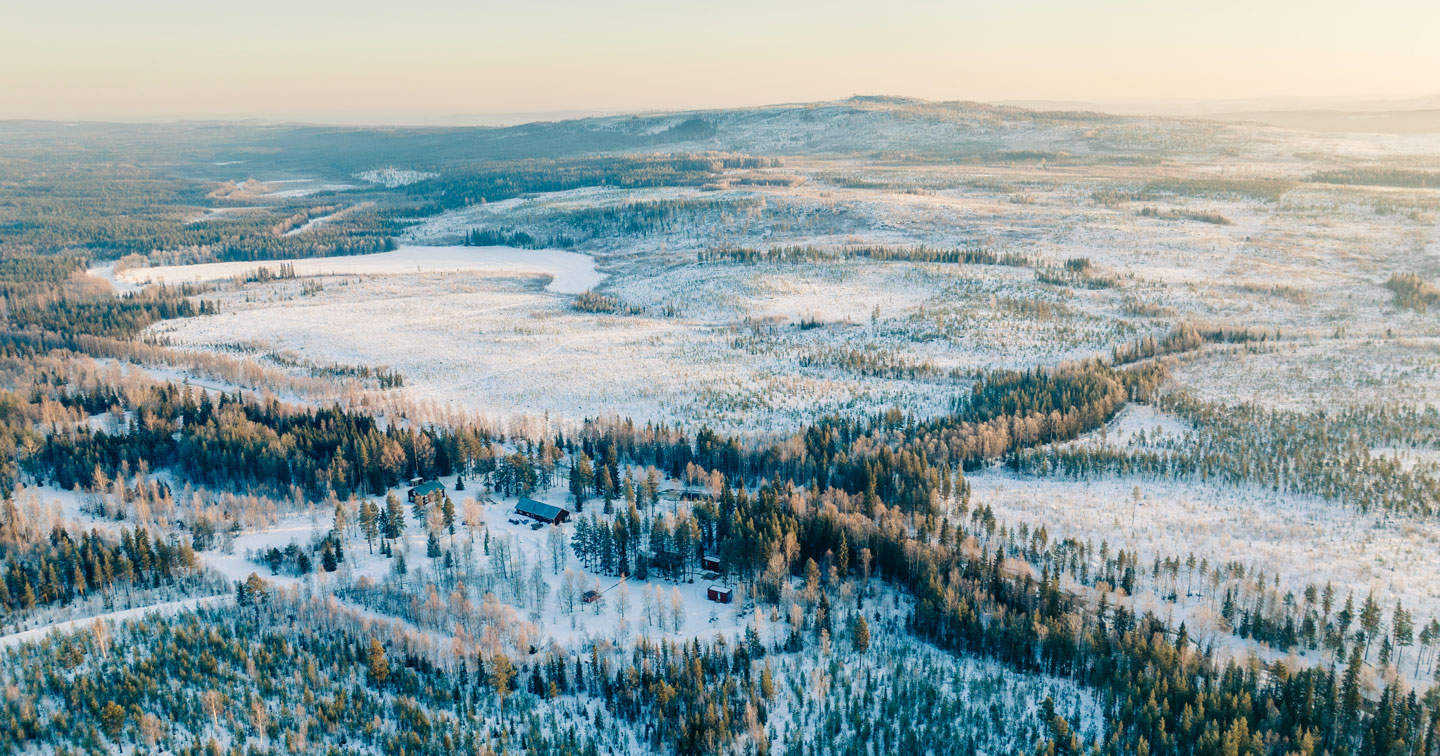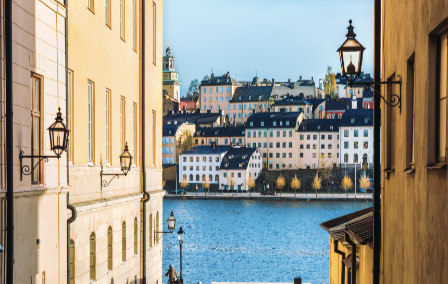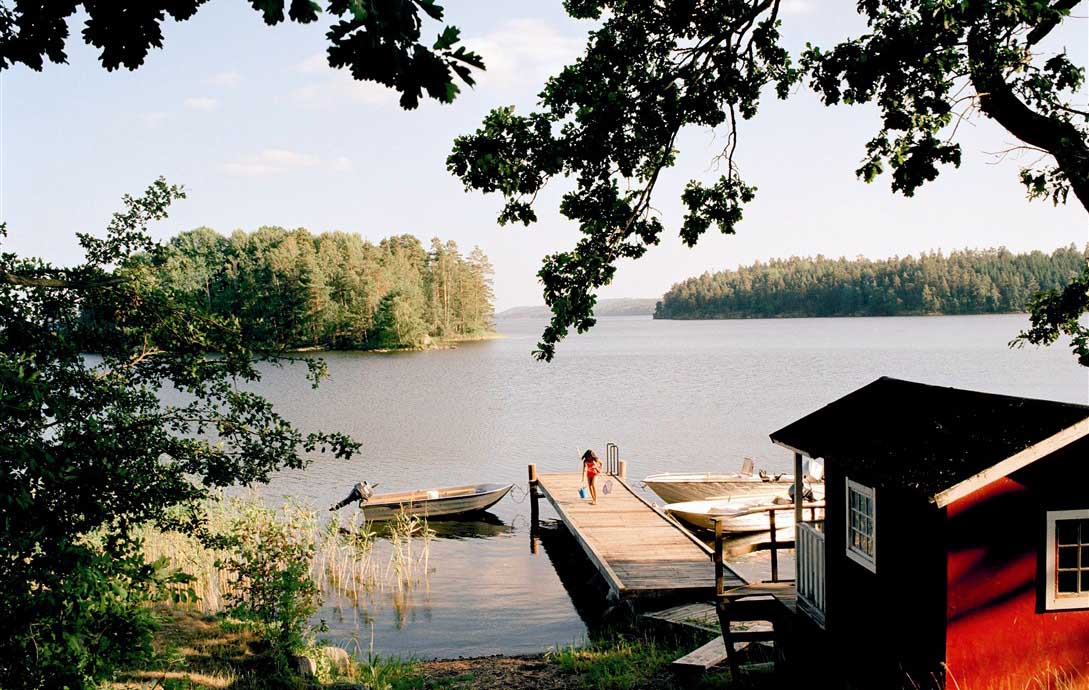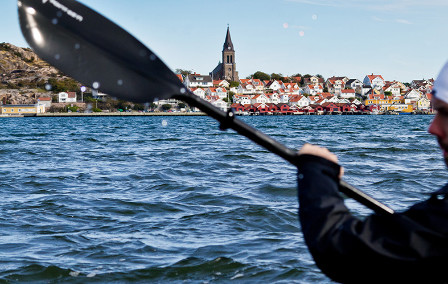Published 22nd Dec. 2022
Reading time
Preserving the best of a country’s cultural and natural sites, UNESCO (the United Nations Educational, Scientific and Cultural Organisation) ensures that the nation’s history lives on and tales of its past can continue to be told. In the case of Sweden, this story is overwhelmingly cultural, with 13 out of its 15 UNESCO World Heritage Sites falling into the culture category. Formally the Kingdom of Sweden, the Scandinavian nation has a long and illustrious history which dates back to prehistoric times and is perhaps most renowned for its period of Viking rule. Spread across thousands of coastal islands and interlinked inland lakes, Sweden’s UNESCO Sites are woven into the fabric of this complex and captivating Nordic country. If the land of ABBA, meatballs and minimalist design has caught your eye, then read on for our list of the best UNESCO Sites in Sweden…
Sitting pretty in northeast Sweden, the seven wooden farmhouses of Hälsingland represent the pinnacle of a regional timber building tradition, hailing from the Middle Ages. During the 19th century, farmers used their wealth to build elaborately decorated farmhouses which could reflect their prosperity, often kitting them out with suites of rooms reserved for special occasions. Situated within 60 miles of one another, their ornately painted interiors showcase a fusion of Dalecarlian folk art (from Dalarna), Baroque and Rococo art styles. While most of the houses remain privately owned, a few are open to the public and one is available to stay in if you really wish to immerse yourself in this long-standing cultural tradition.
The only natural feature to grace the list of UNESCO Sites in Sweden, the Kvarken Archipelago and the High Coast are located in the Gulf of Bothnia, a northern section of the Baltic Sea. Technically, this accolade is shared with Finland, as the Kvarken Archipelago (a chain of 5,600 islands) belongs to Sweden’s Nordic neighbour. The High Coast, however, is entirely Swedish and emerged during the last Ice Age, sculpted by the combined processes of glacial retreat, glaciation and the advent of new land. One for the keen geographers and budding geologists among us, the site offers outstanding opportunities for analysing the processes that have formed the glaciated areas of the Earth’s surface. Today, the region boasts everything from boutique hotels and cosy cabins to inviting pubs and local restaurants, set among the stunning natural scenery.
A popular summer holiday destination for Swedes, the town of Visby sits on the island of Gotland, around 60 miles east of the mainland. The settlement was established by the Vikings and reached its zenith during the 12th and 13th centuries, becoming a dominant trading post and the centre of the Hanseatic League (a medieval commercial confederation of merchant guilds and market towns in Central and Northern Europe). Visby’s medieval architecture and urban design is remarkably well-maintained, touted by UNESCO as the best-preserved fortified commercial city in northern Europe. Explore the surviving medieval street pattern, stay in a Romanesque-style townhouse and visit crumbling church ruins for a healthy dose of Swedish Hanseatic history.
One of the more unusual UNESCO Sites in Sweden, Grimeton Radio Station can be found in Varberg, on Sweden’s west coast. Constructed in the early 1920s, the compound is a monument to early wireless transatlantic communication, and its buildings, transmitter system and original steel towers remain intact. Even more impressive is the fact that Grimeton is the only surviving transmitting station which used pre-electronic technology and is still fully operational. You don’t have to be an engineer or electronics fanatic to appreciate this technological time warp. However, if visiting a radio station isn’t high on your list of travel priorities, the nearby town of Varberg is equipped with some luxury hotels and the highest concentration of spas in the country (another credible reason to visit this region).
Stockholm is blessed with some wonderful art museums, showcasing everything from modern art to Renaissance masters. Yet, look slightly further afield to the Tanum Municipality – in the north of Sweden’s Bohuslän province – and you’ll find some outstanding examples of Bronze Age art, in the form of rock carvings. Featuring varied motifs - including depictions of animals, humans, weapons and boats - there are at least 1,500 known carving sites across the region, with the artworks providing an insight into the beliefs and culture of people during the European Bronze Age. A well-marked path winds its way across the landscape for almost four miles, offering an easy way to gaze at the prolific rock carvings.
Written by Luisa Watts

Enthusiasm is contagious, and there’s no better way to get excited about a Swedish getaway than by talking to our travel consultants. Tap into the Swedish wilderness in a specially selected cabin (we’re constantly on the hunt for the best), or fika ‘til you drop in our favourite Stockholm cafes (which we’ve done the tough job of testing out for you). Along with our hands-on Concierge team, we can help you do as the locals do and organise the best activities for your trip, from overnight dog sledging to outdoor cooking.
ENQUIRE NOWPractical advice and inspiration for your next trip

Stockholm or Gothenburg, Gothenburg or Stockholm... As Sweden’s stylish capital (and, more importantly, the birthplace of ABBA), the answer to this question appears to be a no-brainer. What could be more iconic than the hometown of the Swedish supergroup? Yet, as trendy and charming as Stockholm is, Gothenburg also has a lot going for it. Built along Dutch-style canals and blessed with leafy boulevards, Sweden’s ‘second city’ has everything you could want from a lively metropolis – without the crowds.
5th April 2025 - Sweden Culture

From its fairy-tale-like landscapes to its vibrant cities and otherworldly Northern Lights displays, Sweden is an easy country to fall in love with. Beauty abounds in this Nordic nation, and you’ll find plenty to point your camera at, whether it’s the colourful buildings and cobblestone streets of Stockholm, the frozen lakes and sugar-dusted mountains of Swedish Lapland or sweeping wildernesses and sandy beaches of Gotland.
1st February 2025 - Sweden Travel Inspiration

The Swedes know how to embrace the great outdoors, and our Europe specialist, Valeria, discovered what the hype’s all about during her recent research trip. She learnt about lobster fishing, relaxed in a lakeside sauna, slurped fish soup, hopped between islands on ferries and appreciated the country’s eco way of life...Valeria’s trip was nothing short of authentically Swedish. Interested in learning all about it?
20th November 2024 - Sweden Travel Tips

Our team of destination experts will get to know you and your unique requirements for your holiday

We work with you to build an ultra-personalised holiday itinerary with your choice of accommodation, experiences and activities

All of our holidays include little extras designed to make a big difference to your trip, from fast-tracking you through airport check-in and security to our network of local Concierges